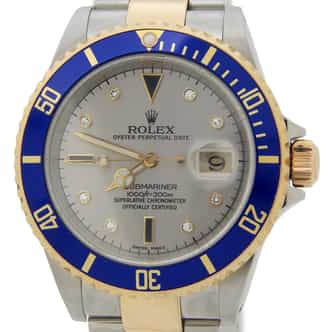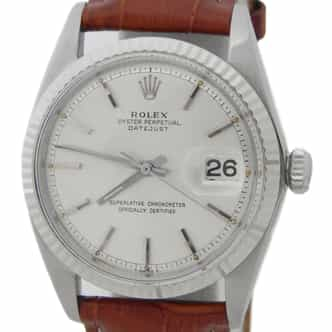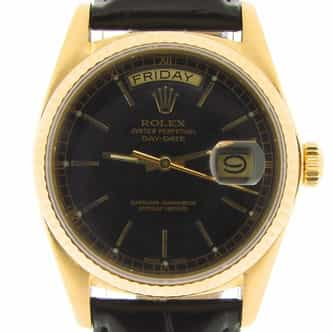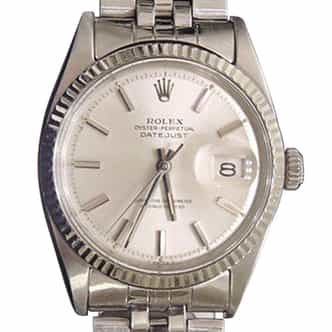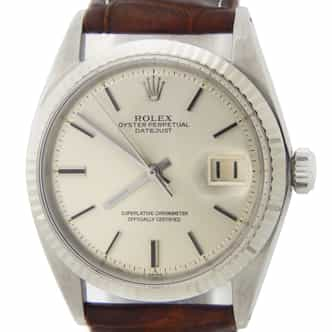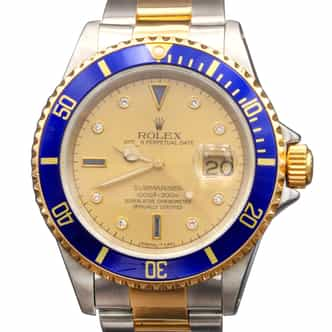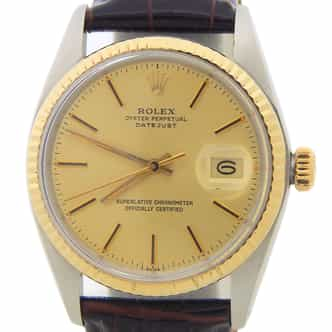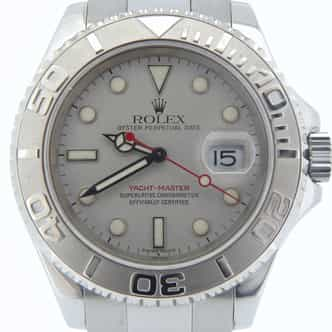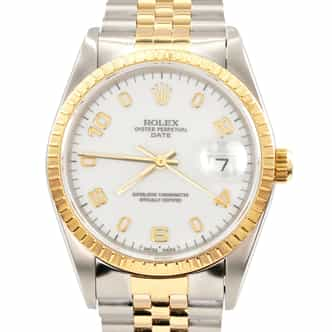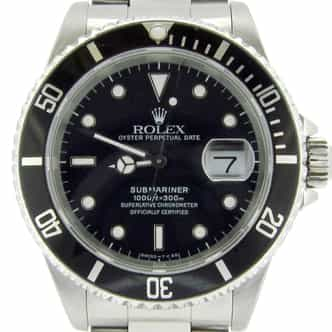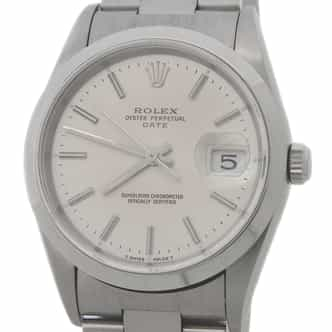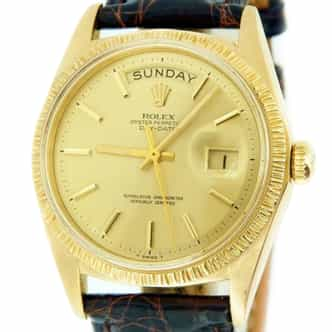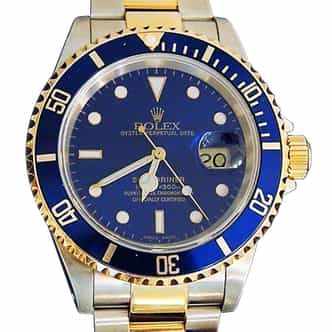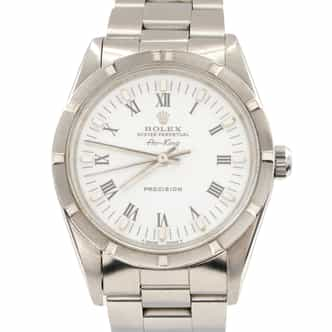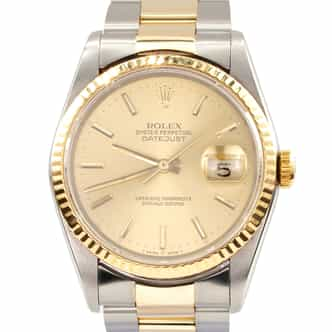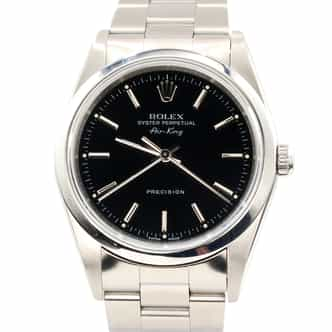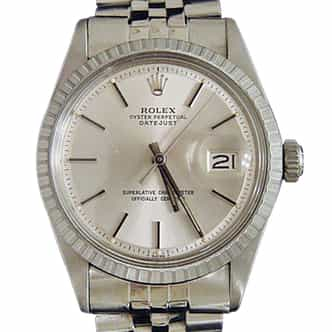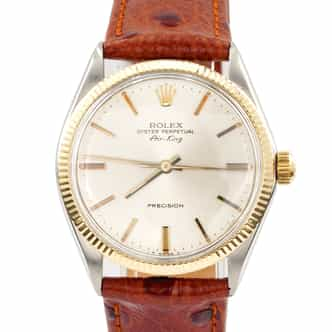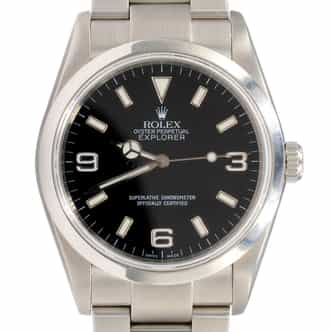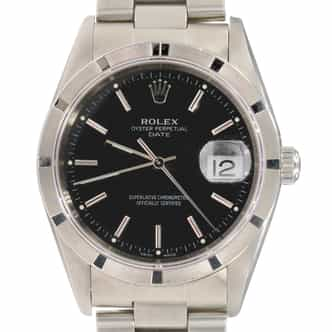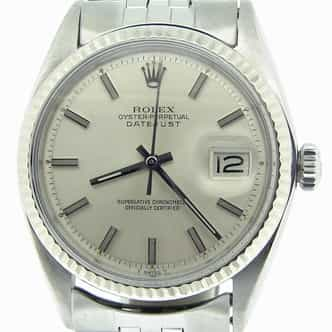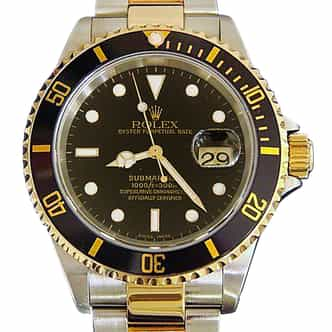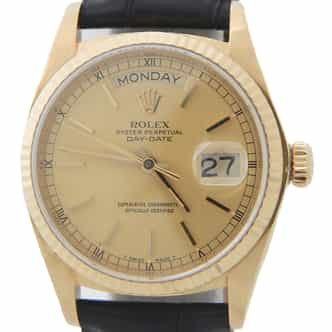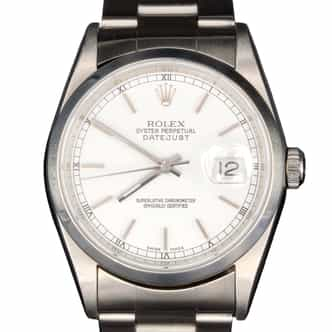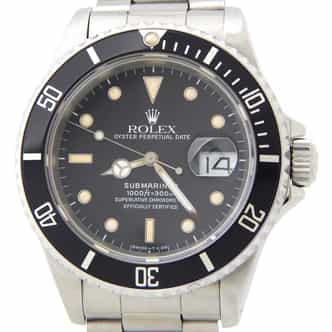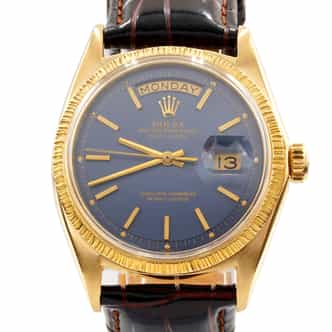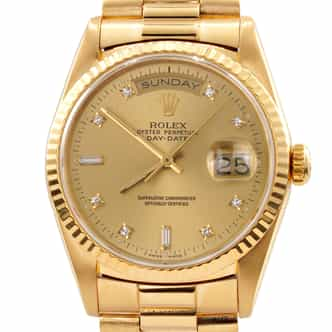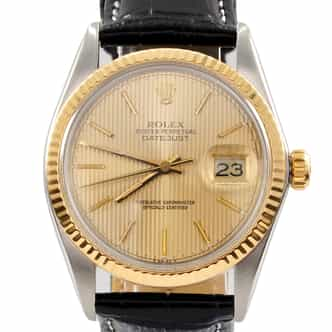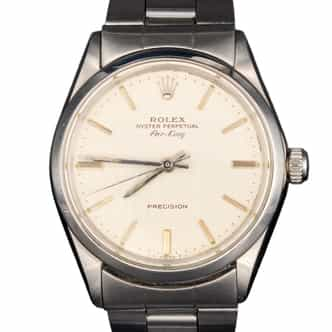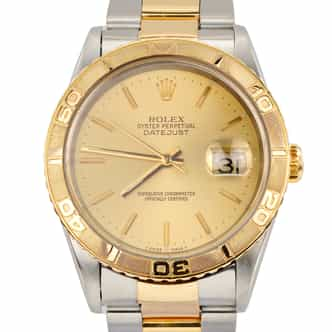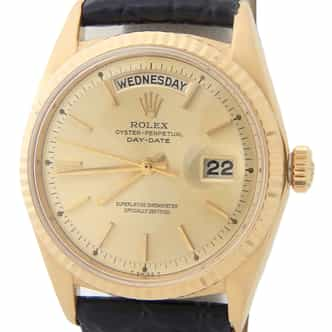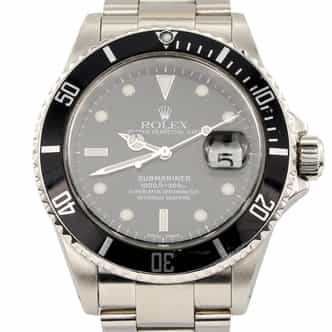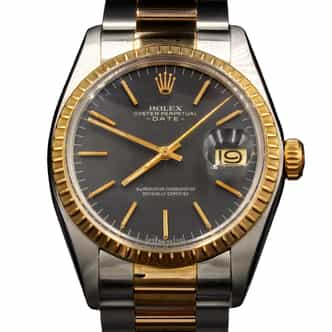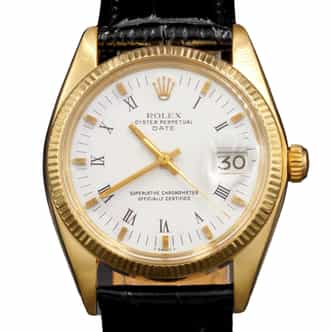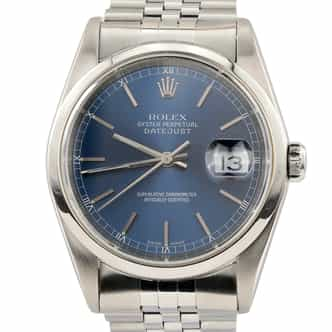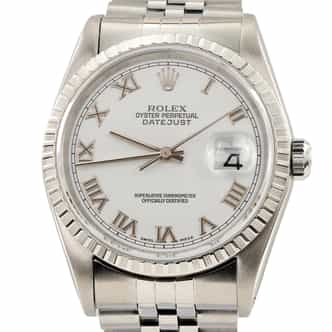-
Your Price:
$17,199.98 $2,000 | Coupon: BLKFR2000 -
Your Price:
$13,599.98 $1,500 | Coupon: BLKFR1500 -
Your Price:
$10,399.98 $850 | Coupon: BLKFR850 -
Your Price:
$4,699.98 $550 | Coupon: BLKFR550 -
Your Price:
$4,699.98 $700 | Coupon: BLKFR700 -
Your Price:
$14,099.98 $2,000 | Coupon: BLKFR2000 -
Your Price:
$8,199.98 $700 | Coupon: BLKFR700 -








-
Your Price:
$12,499.98 $2,000 | Coupon: BLKFR2000 -
Your Price:
$5,299.98 $800 | Coupon: BLKFR800 -
Your Price:
$4,799.98 $550 | Coupon: BLKFR550 -
Your Price:
$4,699.98 $550 | Coupon: BLKFR550 -
Mens Rolex Two-Tone Submariner 16613 with Gold Diamond & Blue Sapphire Serti Dial (SKU 16613DDFPAMT)Your Price:
$14,099.98 $1,000 | Coupon: BLKFR1000 -
Your Price:
$9,999.98 $1,250 | Coupon: BLKFR1250 -
Your Price:
$5,299.98 $700 | Coupon: BLKFR700 -
Your Price:
$9,999.98 $1,000 | Coupon: BLKFR1000 -
Your Price:
$10,699.98 $750 | Coupon: BLKFR750 -
Your Price:
$7,999.98 $1,000 | Coupon: BLKFR1000 -
Your Price:
$10,499.98 $600 | Coupon: HOLIDAY600 -
-
Your Price:
$5,799.98 $850 | Coupon: BLKFR850 -
Your Price:
$5,999.98 $1,000 | Coupon: BLKFR1000 -
Your Price:
$4,799.98 $550 | Coupon: BLKFR550 -
Your Price:
$10,499.98 $850 | Coupon: BLKFR850 -
Your Price:
$13,299.98 $600 | Coupon: HOLIDAY600 -
Your Price:
$5,299.98 $400 | Coupon: HOLIDAY400 -
Your Price:
$6,499.98 $600 | Coupon: HOLIDAY600 -
Your Price:
$5,799.98 $400 | Coupon: HOLIDAY400 -
-
Your Price:
$5,199.98 $600 | Coupon: BLKFR600 -
Your Price:
$4,499.98 $400 | Coupon: HOLIDAY400 -
Your Price:
$7,299.98 $750 | Coupon: BLKFR750 -
Your Price:
$6,499.98 $1,000 | Coupon: BLKFR1000 -
Your Price:
$5,199.98 $600 | Coupon: BLKFR600 -
Your Price:
$13,499.98 $1,500 | Coupon: BLKFR1500 -
Your Price:
$10,999.98 $1,000 | Coupon: BLKFR1000 -
Your Price:
$6,899.98 $600 | Coupon: HOLIDAY600 -
Your Price:
$10,499.98 $600 | Coupon: HOLIDAY600 -
Your Price:
$11,499.98 $1,500 | Coupon: BLKFR1500 -
Your Price:
$8,999.98 $1,000 | Coupon: BLKFR1000 -
Your Price:
$19,499.98 $600 | Coupon: HOLIDAY600 -
Your Price:
$5,599.98 $750 | Coupon: BLKFR750 -
Your Price:
$4,499.98 $600 | Coupon: BLKFR600 -
Your Price:
$8,999.98 $1,000 | Coupon: BLKFR1000 -
Your Price:
$9,999.98 $600 | Coupon: HOLIDAY600 -
Your Price:
$10,999.98 $600 | Coupon: HOLIDAY600 -
Your Price:
$9,999.98 $1,500 | Coupon: BLKFR1500 -
Your Price:
$5,399.98 $750 | Coupon: BLKFR750 -
Your Price:
$7,499.98 $600 | Coupon: HOLIDAY600 -
Your Price:
$7,499.98 $1,250 | Coupon: BLKFR1250 -
Your Price:
$6,899.98 $600 | Coupon: HOLIDAY600
Featured Blog
Mens Rolex Watches
Back in the day, splitting Rolex’s extensive collection into convenient ‘his & hers’ categories was a simple process. The majority of the brand’s output was very much focused on Rolex watches for men with the occasional model being taken away, shrunk to a more feminine size, renamed the ‘Lady Something or Other’ and offered for sale to a female audience.
Over time, however, the tastes of both sexes have veered towards ever larger watches. So, while pieces such as the Lady Datejust still exist, a 28mm version of the iconic stalwart, and the Lady Yacht-Master has only recently been retired, many of the models that started life generations ago as strictly men’s watches have now crossed over and have a true unisex appeal.
Designed For A Male Audience
Is there such a thing as a purely ‘mens’ Rolex anymore? The majority of the biggest names in the professional collection were born in the fifties. In that era, the occupations the watches were designed to help were almost exclusively male-dominated roles.
Pan Am, for instance, commissioned Rolex to create the GMT-Master for their pilots in 1954. This was a full 20 years before the first female airline captain. Similarly, it wasn’t until 1975 that a woman stood on Everest’s peak, more than two decades after Hillary and Tensing had conquered the mountain and inspired the Explorer collection.
It was a vastly different time, and one that has been particularly slow to change. Now, however, there are no such barriers to either employment or adventure. More and more women are wearing watches that would have been unthinkable in the past.
So the Rolex catalog really consists of exclusively ladies watches. And watches that, in a bygone age, used to be exclusively men’s.
Of course, there are a number of models that are still, for whatever reason, more popular with the boys. They tend to be the tougher, more utilitarian offerings. These are the ones that have stuck closest to the tool watch philosophy that first made Rolex’s name.
Below, we’ve singled out a few of our favorites.
The Rolex Explorer II
If we’re going to talk about all things rugged and manly, there is only one place to start, and that place is Steve McQueen. And if we are going to talk about Steve McQueen, we have to talk about the Explorer II.
Launched in 1971 to complement the original series created to mark the summiting of the highest peak on earth, the Explorer II was similar to its namesake in no way whatsoever.
Where the initial Explorer was the personification of simple, three-hand minimalism, its sequel was a hard-as-nails pioneer, destined for some of the most unforgiving environments imaginable.
The first Rolex Explorer II, the ref. 1655, emerged as the answer to the prayers of the world’s spelunkers; cave divers who spent prolonged periods underground in near total darkness. In such places, losing track of night and day on the surface is pretty much a given, so the watch’s bright orange additional hour hand tracked around the dial at half speed, pointing out the correct time on the 24-hour engraved bezel. Generous lume plots on the hands and at every two-and-a-half minutes on the indexes also gave it a greatly enhanced legibility.
Hollywood Royalty
So, it was an especially resilient and useful companion. The only problem was, nobody wanted one.
While it shared the same movement as the aviator’s friend, the GMT-Master, the Explorer’s static bezel meant it was not a true dual time zone watch. As essentially an AM/PM indicator, it had a limited marketability. And the workmanlike styling restricted its following even more. Set alongside the multicolored charms of the GMT, and the ref. 1655 came a very poor second.
But where does the King of Cool come in? Well, a contrived and completely unsubstantiated rumor in the mid-seventies suggested it had suddenly become Steve McQueen’s timepiece of choice, based solely on one blurred paparazzi photograph appearing in an Italian magazine of the movie star wearing a vaguely similar looking watch. In reality, it was far more likely to have been the ref. 5512 Submariner he wore extensively throughout his life, but the Sub needed nothing in the way of extra promotion. With Rolex keeping quiet about the probable mistake, the original Explorer II became known as the Steve McQueen Rolex.
The Dark Horse
Yet, unlike the magic McQueen’s contemporary Paul Newman worked on the exotic dial Daytonas, turning them from also-rans into some of the most desirable watches ever made, the spelunker’s watch still lagged a long way behind in the image stakes.
In truth, it is still the outsider’s choice and probably intentionally so. Rolex is by far the most famous watchmaker in history, with a litany of models so recognizable, even those with zero interest in horology can identify one from across a crowded room. That level of populism is fine for one type of collector—those who are comfortable for everyone to know they wear a Rolex.
But the Explorer II has a fierce cult following, made up mainly of those who enjoy the appreciative nods of other, more knowledgeable admirers.
It has been kept stubbornly functional, never succumbing to the allure of precious metals in its construction and so has always lacked the versatility of its stable mates.
It is the dark horse, the understudy, and the purists love it for exactly that reason.
With its no-nonsense reputation and a link, however tenuous, to the poster child for masculinity, the Explorer II may be the ultimate man’s Rolex.
The Rolex Sea-Dweller
The Sea-Dweller shares the same ethos as the Explorer II. It was built for a definite purpose and has stuck to it, as all around much of the sports collection has been softened to appeal to a far wider market.
While Rolex broke new ground with the Submariner, there was always scope to go further with it. A water resistance of 300m met, and exceeded, the needs of recreational divers, but those who made their living working underwater required something extra.
Specifically, they needed a watch that could survive not just the crushing pressures of the descent, but also the trip back to the surface.
The problem professional saturation divers faced was the build up of helium bubbles.
At the great depths commercial crews face, their breathing gases have to be made up of a tightly controlled mix; either oxygen and helium, called Heliox, or oxygen, helium and nitrogen, known as Trimix.
Adding the helium reduces the detrimental effects of the other gases when put under pressure. But the drawback is the size of the bubbles.
Helium has some of the smallest molecules of any gas. They’re easily small enough to find their way inside the cases of the divers’ watches.
When ascending from a prolonged Heliox or Trimix dive, the reduction in pressure caused the bubbles to expand, popping the crystals off the watch.
COMEX, the leading industrial diving company, approached Rolex at the start of the 1960s, much like Pan Am had a decade before, to work out a solution.
The Helium Escape Valve
The result was the HEV, or Helium Escape Valve. This one-way regulator, initially retrofitted to a ref. 5513 Submariner (to make the utterly grail-like ref. 5514) allowed for the bubbles to seep back out of the watch as they expanded, safeguarding the integrity of the timepiece as a whole.
With the initial tests successful, Rolex put the HEV onto a new, hardier body and the Sea-Dweller was born.
Dive Buddy
Unlike the Explorer II, it was an immediate success. However, it may not have sold in quite the same numbers as the ubiquitous Submariner on which it was so clearly based. But the Sea-Dweller’s image of the ultimate version of the ultimate dive watch gained it legions of devoted admirers.
That reputation has only strengthened over the years as it has stuck to its roots. Meanwhile, the Sub is far more likely to be seen worn with a business suit than a wetsuit.
The Sea-Dweller is the big brother, indifferent to unnecessary gold or platinum finery. It’s only forged from the strongest steel and made to cope with conditions way beyond what its predecessor could handle.
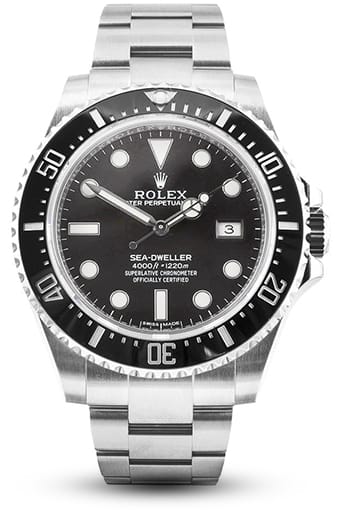
Even the dial was kept more down-to-earth, lacking (until its most recent iteration) the controversial Cyclops over its date window that some felt had robbed the Sub of much of its symmetry.
904L Steel
And it only continues to get more robust. Its initial water resistance of 2,000 ft was soon doubled to 4,000 ft. It was the first of the brand’s watches to be cast in the insanely strong 904L steel now used across the entire range. Also, the latest model has received a significant upgrade in size, going from the traditional 40mm to 43mm. This is just a shave below the lunatic Deepsea.
Like the Explorer II, it is the way the Sea-Dweller has remained true to its origins that has kept it relevant in the wake of the rest of Rolex’s professional watches changing tack and becoming more of a status symbol.
It is perhaps the best all round dive watch there is. It’s tougher than anyone could ever need and stylish enough to go anywhere.
Make sure you check out our entire selection of vintage and used Rolex watches for men and women for the best quality and value.
Learn About
The Allure of Rolex Watches for Men
There is no company more recognized or revered in the world of watchmaking than Rolex.
Not only the most successful luxury timepiece brand of all time, they are also among the biggest luxury marques of any kind. The name is now synonymous with affluence and aspiration. They are the number one choice of just about anyone looking to announce they have ‘made it’.
However, it’s far from being a triumph of style over substance. Rolex, from their earliest days, have prioritized the relentless pursuit of excellence in both design and engineering. It is the philosophy, ongoing now more than ever, that has kept them so far ahead of their competition that they occupy a sphere entirely their own. In terms of reputation, there is no other manufacture that comes within shouting distance.
Mens Core Lineup
The vast majority of Rolex’s output were originally intended exclusively for a male audience. Most of the mens Rolex core lineup, models with names so iconic even those with zero interest in watches can identify them, were released between the 1950s and 1970s. These were less enlightened times when only men were likely to need something that could survive a plunge to uncharted ocean depths or help them tackle jetlag as they piloted transcontinental airliners.
Larger Watch Sizes for Men and Women
These days, with no such barriers (or at least fewer), evermore of these ‘mens’ pieces are being worn by women as well. The fashion for larger watches across both genders has made previously unheard of sizes on a female wrist a common sight, and Rolexes in particular.
Nevertheless, for the sake of argument, we can stick to calling the bulk of the brand’s offerings their Mens Rolex Collection. It is an archive well over a hundred years old. This leaves a colossal number of watches to discover with prices ranging from the surprisingly reasonable to the outright terrifying.
Within that anthology are some of the most famous timepieces ever created. They are watches that forged the path for others to follow, either with groundbreaking abilities or aesthetics or both, through to some lesser known cult favorites. And, some of them are still waiting for their moment in the sun.
Certain models are relatively commonplace. But others are so fantastically rare they exist as little more than rumor.
A Focus on the Exceptional Men’s Models
Below, we will explore 6 key points highlighting the allure of Mens Rolex Watches: Financial, Options, Sizes, Functionality, Availability, and Timeline. We will look at the standouts among this vast assortment and take in the different roles assigned to various models. We’ll include the specific functionality built in by Rolex and the combinations of metal, color, size and detailing available. In addition, we’ll also speculate on the best investment potentials.
This is obviously a huge subject, with a lot of ground to cover. So, let’s dive straight in with the following sections:
Financial
This is going to sound like an odd statement to anyone with only a passing familiarity with the brand, but I’m going to make it anyway; Rolex watches are not expensive.
I’ll explain. Yes, the buy-in price for a new model does indeed seem high. The current entry level, the 39mm Oyster Perpetual (since we’re talking about the mens Rolex collection) retails at around $5,500 from an Authorized Dealer. Like any luxury item, it will be hit by a certain amount of depreciation once you leave the store. Buying the same watch on the pre-owned market, even though it will have barely been out of the box, will cost you a few hundred dollars less. However, unlike say, a car, there is a definite floor beyond which the value of a Rolex, any Rolex, will not drop.
Such is the renown of the name, that watch will pretty much hold its worth from then on. That means, should you decide to sell your Oyster Perpetual at some point, you can expect to make most of your money back. Buy yourself any of a number of sought-after vintage models, and you may actually find yourself with a tidy profit.
This is not the case with every luxury brand, and certainly not with things like Smartwatches. Nobody is going to make any money trading in an Apple Watch or hand one down as an heirloom. In fact, with the possible exception of Patek Philippe, no other watchmaker can boast the sort of performance Rolex has.
Collectors
Many collectors see these models as assets rather than expenses, and a good place to park some money for a while.
So, how much do you actually need to spend to secure yourself your dream watch? Most Rolex products, taking in both new and pre-owned examples, live in the $3,000 to $20,000 bracket. For that, you can pick up some exquisite pieces with names that read like the Who’s Who of horology. The mens Rolex Submariner, the GMT-Master, the Daytona, the Explorer, the Datejust—all can be had for in and around that price point.
Flagship models such as the Sky-Dweller and box fresh examples of the Day-Date use the upper limits of that range as a starting point and can climb well out of sight.
The Pre-Owned Market and Price
The materials used obviously have a bearing, but not necessarily in the way you would think. A Rolesor GMT-Master for instance (half gold, half steel) will be less expensive than an all stainless steel one. Why? Because more people want the steel version. Rolex are well aware of that and severely limit the number it offers for sale, creating a shortage on the pre-owned market and inflating the price. Gold, especially yellow gold, tends to fall in and out of fashion, greatly affecting the resale price of watches regardless of the current value of the metal.
Where things get really very expensive indeed is with the true legends; classic watches from yesteryear with enthralling stories and quantities measured in the small handful.
MK I Dial Double Red Sea Dweller
The MK I dial Double Red Sea-Dwellers are one example. The first generation of the Sub’s bigger brother, the very earliest models have what is known as a ‘Patent Pending’ case back. Related to the engraving Rolex made on the watch to indicate they were waiting for the official registration of their new Helium Escape Valve, these ultra rare models can easily sell in excess of $100,000 on the few occasions they appear at auction.
Several of the sports collection have these sorts of outliers, sometimes the very first iteration of the name, or else a short-lived alternative to the standard piece.
Paul Newman Daytona
Perhaps the most famous of them all, or at least in the last few years, are the so-called Paul Newman Daytonas. An unmitigated failure on their release, these exotic dial variations on the Cosmograph theme had their fortunes transformed when a certain member of Hollywood royalty was spotted wearing his. These days, you will be lucky to find one costing less than a quarter of a million. The ultimate, of course, is the example owned and worn by the man himself, sold at auction in 2017 for a world record $17.7M.
The Good News
So the good news to takeaway from all of this is that buying a Rolex is not just the preserve of the super rich. Even though we called our $3,000 the starting point for the majority of watches, there are still plenty available for even less. You can realistically locate a watch from the finest manufacture of them all for a little over $1,000, and still be fairly confident it will hold its value.
Of course, if you actually are one of the super rich, your options are pretty much endless.
Speaking of which…
Options
With both the length of time Rolex has existed, and the fact they initiated a huge amount of everything we today take for granted, the options list available across their history is exhaustive.
Metals
Starting at the beginning are the metal types. The brand originally set themselves up as the makers of the toughest and most reliable tool watches on the planet; models to be worn by adventurers and pioneers as they tackled challenges never before attempted.
Stainless Steel
Names such as the Submariner, the Daytona and the GMT-Master were first produced exclusively in stainless steel, before their unrivalled popularity took them far beyond their roots and into the realms of status symbol.
From there, gold in all its colors (red, white and yellow) and even platinum have been introduced. Others, like both Explorers, as well as the Sea-Dweller, Milgauss and Air-King have only ever been forged in steel, sticking closer to their original purpose.
Gold and Platinum
More recently, everything has reversed. The last three releases from Rolex, the Sky-Dweller and the Yacht-Master I and II, each still touted as tool watches, all started life with gold and platinum versions before then going on to be released in steel, as fans demanded more affordable options.
Two Tone Rolesor
One watch that has never had even a whiff of steel in its entire story, not even in Rolex’s two-tone Rolesor, is the Rolex Day-Date. This emblem of achievement, nicknamed the President, is available in precious metal or nothing and still stands today as the brand leader.
Gold Shell
A middle ground between the opulence of solid gold and the all-out utility of steel, is gold shell. This process of covering a steel case with a thick layer of 18k gold is one that hasn’t been an option for many years, but remains a well-liked addition on the vintage market.
Dials
Moving onto dial types, here again, there is a great deal of variety. With the professional collection, Rolex has always prized legibility first and foremost. So, numerals are often discarded in favor of simple batons or, more usually, the mix of circles, baton and inverted triangle we are used to seeing on the brand’s dive and dual time zone watches. It leaves the face as uncluttered as possible while still displaying all the information.
The handsets across the collection are equally readable, either plain stick hands as on the dressier pieces, or else the Mercedes style, where the hour hand is shaped like the famous carmaker’s emblem. It gives a sporty feel, and is more easily seen in the dark as the wider surface area holds more lume.
Luminescence
That luminescent element has evolved greatly over the years, starting off with the highly radioactive radium, before graduating to the slightly safer tritium, then Luminova, Super Luminova and finally Chromalight, which glows blue rather than the previous green. The older style lume typically ages to an attractive patina that appeals to many collectors.
Dial Colors
As for dial colors, the scope of available options depends on the watch. The mens Rolex President, Rolex Datejust and the humble Oyster Perpetual have long had the most variety, from the sober monochrome tones of black and white, through to some extraordinarily vivid shades. The Day-Date was given a range of blindingly bright visages in the 70s, known as the Stella dials, and was even outfitted with faces crafted from slivers of genuine meteorite.
Dial Colors and Materials
Of the tool watches, the Daytona has the widest choice, with a broad mix of colors along with some exotic materials; mother-of-pearl has been a feature of the chronograph collection for a while. The Submariner also has a couple of very popular alternatives to the longstanding black dial, with a green version (known colloquially as the Hulk) as well as two blue pieces (one on a white gold case nicknamed the Smurf, the other on a Rolesor body called, disappointingly, the Bluesy).
Black and White
The other professional watches have a particularly limited range of dial colors, with only one or two options at the most. Black and white are normally favorites for their high definition against contrasting indexes and hands.
Bezels
Bezels are a key feature on many Rolex models, lending both a vital functionality as well as an aesthetic identity. None more so than with the GMT-Master, the watch made at the request of Pan-Am to help their pilots and crew stave off jetlag. The bi-color surround helped distinguish between night and day at a glance, starting off with blue and red, unofficially christened the Pepsi, before going on to the Coke (black and red), the Root Beer (brown and gold), the Batman (black and blue) and an all-black version which didn’t really work hard enough to deserve a nickname.
Rotating Bezel
The Submariner, too, is a watch defined by its frame. The rotating bezel became an important safety aspect for divers, allowing wearers to keep track of how much time they spent underwater. It was improved on in the early 80s when Rolex was able to make it unidirectional (the patent was previously held by Blancpain on their Fifty Fathoms) meaning if it was knocked, it would only overestimate dive time rather than under.
Bakelite, Aluminum, and Cerachrom
Over the years, the bezels have been made from a variety of different materials, as technologies allowed. The GMT’s first inserts, for example, were formed from Bakelite, until it was proven to be too brittle. Aluminum was used for a long time before being replaced in the early 2000s with a ceramic of Rolex’s own invention, the nigh-on unbreakable Cerachrom.
Smooth, Fluted, and Engine-Turned
The dress watches are similarly each given a distinctive character by their bezel design. The Datejust and Day-Date each come with either a smooth or fluted surround, or can even be beset with precious stones. And in the archives you will quickly come across another type; the engine-turned bezel. These have decorative grooves engraved into them, and were once a popular option which has sadly since been discontinued.
Bracelets
Finally, the bracelets. Leather straps are seen only very rarely in the Rolex catalog, limited to either the Cellini range, the brand’s dress watch collection, or else newer versions of the Sky-Dweller. Instead, the manufacture opts for one of a trio of metal bands—the Oyster, the Jubilee and the President.
Oyster, Jubilee, and President
The simplest, the three-link Oyster, is most often matched with the toughest of the tool models. But the five-link Jubilee was created especially for the Datejust in 1945 and has since graduated to a number of others. The President, another three-link bracelet but with semi-circular rather than flat links, was introduced for the Day-Date. And, with the exception of a smaller version on some of the Lady-Datejust pieces, that is where it has stayed.
The Oysterflex
Very recently, Rolex has introduced its first ever rubber strap, the Oysterflex—a high-tech polymer over a metal alloy core which complements certain models in the Yacht-Master and Daytona families.
Sizes
The definition of what constitutes a man’s size watch seems to be in a constant state of flux. When Rolex was founded at the beginning of the 20thcentury, pieces were very much in the 30mm to 32mm range. Today those would certainly be seen as ladies sizes.
36mm
When the brand introduced the Datejust, really the start of the modern collection, it was as a 36mm model. For the era, it was relatively large but it would go on to become the norm for dress watches. In fact, it is extremely rare these days to see a ‘man’s’ watch at less than 36mm, and most are far bigger than that. The Datejust itself is now offered at the traditional 36mm and a sign-of-the-times 41mm.
34mm
There is one peculiar offshoot called simply the Date, which is identical to the Datejust except it comes in at 34mm and is generally offered only in steel. You’ll find it listed as both a men’s and women’s piece.
38mm
Most of the brand’s early tool watches, those that came to light in the 50s, started out at 38mm to lend them a look of extra solidity. They all graduated to 40mm very soon after, which then became the standard across the professional range.
The trend for ever bigger sizes continued throughout the 90s and 2000s. Although Rolex mostly resisted, preferring instead to keep 40mm dimensions on paper and give just the illusion of increased proportions by increasing the width of crown guards and lugs—with what they call their Super case. Several models have also been given Maxi dials, with fatter hands and indexes, for the same reason.
44mm
Most of the contemporary Rolex lineup exists at 40mm-plus, the biggest currently being the Sea-Dweller Deepsea, measuring some 44mm across and 17.7mm thick. Even so, that is far smaller than a watch designed to survive a plunge to 12,800 feet could be.
It is a recognizable trait with Rolex that their watches remain somewhat understated size-wise. While the rest of the horology world seems to want to compete with each other over who can create the most oversized, in-your-face model, Rolex do what they have always done; separate themselves from all the noise and get on with the business of creating timeless classics at time-honored dimensions.
4 Rolex Models That Break The 40mm Barrier
Apart from the Deepsea and the aforementioned Datejust, only four others in the modern lineup break the 40mm barrier, all new watches or else recent upgrades of brand icons; the Sea-Dweller, the Sky-Dweller, the Yacht-Master II and the Explorer II.
The Oyster Perpetual In Five Sizes
One piece that aims to cover as many bases as possible is the so-called entry level watch, the Oyster Perpetual. Including the ladies version at 26mm (the smallest out of the whole current catalog) the Oyster Perpetual comes in five sizes. With a 31mm, 34mm, 36mm and a 39mm to choose from, it is the model designed to suit as many wrists as possible.
Functionality
One of the only criticisms leveled at Rolex down the years is the perceived lack of functionality in their output. While other watchmakers launch various haute horology favorites such as minute repeaters or triple-axis tourbillons, Rolex has never really gone in for that sort of thing.
For most of its duration, the Day-Date’s double calendar or the GMT-Master’s second time zone indicator have been about as convoluted as they have wanted or needed to get.
It is all part of the mission to make watches that will go on forever. So the less there is going on inside, the less there is to go wrong.
The Engine
That being said, the complications they do include stand as some of the best in the industry. If we take the Daytona’s chronograph as an example, it has gone through three variations in caliber in the last 50-odd years.
The first two were actually supplied by a third-party manufacturer. These were the Valjoux 72 and Zenith’s self-winding El Primero. Both were the finest available at the time. They were subsequently stripped down and rebuilt until they met Rolex’s even more demanding standards. The third, and current, engine is the brand’s own in-house mechanism, recognized as the class leader for mechanical stopwatches.
Other than that smattering of examples though, Rolex built their reputation with three-handed masterpieces which just did what they were designed to do; accurately tell the time, even under extreme conditions.
However, several of the features we now absolutely expect to find in a watch started life with Rolex.
The Oyster Case
The first fully water resistant case, the Oyster, appeared in 1926. Their self-winding caliber, another innovation never seen before, launched less than a decade later. And when the Datejust was introduced, it became the first wristwatch to display the day of the month.
There has rarely been anything superfluous with Rolex’s complications. Everything has had a definite purpose and been designed to make the wearer’s life just that little bit easier.
More recently, they have started to dip their toes deeper into the functionality pool, with typically formidable results.
Mechanical Memory
2007 saw them release their most technically complex watch to that point, the Mens Rolex Yacht-Master II. Similar to the original Yacht-Master in no way whatsoever, the sequel was devised with the world’s first programmable countdown with a mechanical memory. This is primarily to help skippers time the starting sequence of a sailing regatta. It’s other purpose, of course, was to try and silence the detractors who doubted Rolex’s ability to produce such an intricate machine.
And, in 2012 they outdid themselves again. The mens Rolex Sky-Dweller, a dual time zone piece also featuring that complication most beloved by hardcore horology fans, with an annual calendar.
Those are the exceptions though. Rolex doesn’t try to compete with other manufacturers with how many different toys they can cram inside a case. They concentrate instead on perfecting their few highly useful qualities.
State of the Art
So calibers are kept as simple as possible. But they have been given the utility of things like hacking seconds and Quickset date functions as they have progressed. The brand is also at the forefront of pioneering new materials, developing state-of-the-art alloys and composites. These include the Parachrom Bleu hairspring or Cerachrom bezel inserts, all with the sole purpose of making their offerings as accurate and as robust as a mechanical watch can be.
It is a continuous effort on Rolex’s part, to both keep themselves ahead of their competition and to ensure their watches last a lifetime.
Availability
Rolex is officially a charitable trust. As such, it is under no obligation to release any information regarding output or sales. And they don’t. They are a notoriously secretive brand. So much so that no one is even 100% sure how many watches they make. However, the generally accepted estimate is that it is somewhere in the region of a million every year. That means there are an awful lot of watches out there on the pre-owned market. So, chances are if all you want is a standard Rolex, you will be able to find one for sale with little difficulty.
Where things get more tricky, and more fun if we’re honest, is when you get your heart set on one of the rarer pieces.
The Rarer Pieces
The company history is littered with examples of so-called ‘grail’ watches. These are, generally, one of the established names with some discrepancy that separates it from the mainstream. Quite often, these are the very first iterations of a particular model.
So the Double Red Sea-Dweller we looked at earlier, with its two lines of red dial text, would certainly constitute many people’s grail find.
Similarly, the debut GMT-Master reference, the ref. 6542 with its Bakelite bezel still intact, is another.
Other times, it might be a watch made for a specific group and never released to the public that becomes highly sought after. The MilSubs, one of the four Submariner models created and distributed exclusively to the British Armed Forces, command enormous prices due to their scarcity and backstory.
The Appeal of Mistakes
For a lot of collectors, the supposed ‘mistakes’ by Rolex have massive appeal. When the Daytona finally received its first automatic caliber in 1988 with the ref. 16520, the organic varnish used to coat the dials failed to cover the three chronograph counters properly, leaving them to turn a rich chocolate brown over the years. These Patrizzi dials, as they are known, have become especially desirable. It was a similar story with the transitional reference of the Explorer II, the ref. 16550 from 1981. A paint defect on the white, or Polar, dials has left them a creamy ivory color, and now sell for a premium over the black dial pieces.
Some of the true rarities in the brand’s vintage collection barely number into double figures. This obviously creates an enormous demand and pushes their value ever upwards. It is a trend that has been going on since the 1980s and shows no sign of slowing down. if anything, it is actually accelerating.
Timeline
When Rolex was founded, in 1905 and originally called Wilsdorf and Davis, the pocket watch was still the only acceptable way for men to tell the time. It would take two world wars for the wristwatch to really prove itself. By 1945, Rolex was ideally placed to take advantage of the newfound popularity.
1920s – 30s
They had spent the 1920s and 30s establishing the pair of innovations that would eventually kill the pocket watch off completely. These were the water resistance Oyster case and the self-winding Perpetual movement.
Now seen as robust and masculine enough to be worn by men rather than just high-born ladies, the wristwatch suddenly became both an indispensible tool as well as a fashion item.
Rolex had already made a name for itself throughout WWII, especially with their aviation-themed models. By the end of hostilities, the mens Rolex Air-King had found a grateful audience among the heroic pilots of the British RAF.
That watch and the Datejust formed the backbone of the brand’s lineup. Especially the mens Rolex Datejust proving something of a revolution, with its groundbreaking date function and impressive styling.
1950s
The 1950s however saw Rolex enter its first golden age. In quick succession, they released the Explorer, inspired by Hillary and Norgay’s conquering of Everest. Then, they released the GMT-Master, commissioned by Pan-Am. Then, along came the Submariner to cash in on the recent Scuba diving fad. Following was a new leading light, the unashamedly elitist Day-Date. Soon after, the Milgauss appeared, with its anti-magnetic Faraday cage aiming to cater to scientists working in the emerging fields of the Atomic age.
Each watch went through a hectic succession of updates and improvements before the end of the decade. As a result, the Rolex name itself started to epitomize the very best in design and engineering prowess.
1960s
The 1960s brought us first the Cosmograph Daytona, the company’s first real attempt at a chronograph. But it fell flat due to the inconvenience of its manually-winding caliber.
In 1967, commercial saturation diving companies started exploring oil fields at the deepest depths of the world’s oceans. However, they needed a watch to accompany them. French specialists COMEX approached Rolex for help, leading to the launch of the Sea-Dweller and its Helium Escape Valve. This was devised to let gases escape from the interior of the watch before they could cause any damage.
1970s
In the 1970s the Explorer II launched. Rolex made it for those who spent their lives in the dark underground subterranean caves. Even garnering the, somewhat erroneous, nickname of the Steve McQueen Rolex didn’t help its sales though. As a result, it joined the Daytona as one of the underperforming dark horses in the stable.
The 70s also ushered in the decimating quartz crisis. This is because nearly two-thirds of Switzerland’s traditional watchmakers sent into bankruptcy by the waves of cheap electronics from Japan and America. Rolex engaged as much as necessary to weather the storm. They released battery-powered versions of the Day-Date and Datejust, known as the Oysterquartz watches.
For the most part though, they remained unaffected, shored up by their peerless reputation.
Instead, they set about refining the models already in the catalog, making them the best in the industry.
1980s
The 1980s saw the resurgence of the Daytona, as it received its first automatic movement. Soon, demand outstripped supply by so much that waiting lists of up to five years became commonplace. Also, impatient customers started turning their attention back to the pieces from the past. The Daytona’s journey to becoming the most sought after watch on the planet began.
1990s
Another all new model wouldn’t appear from Rolex until 1992, with the Yacht-Master. Essentially a more luxurious Submariner, it too generated long lead times.
The turn of the century saw the Daytona finally get its first in-house movement. This meant every watch in the lineup was now powered by a Rolex-built engine.
The professional range received constant updates, with new materials being developed and restrained alterations made to their styling.
2000s
The 2000s also saw the launch of the immensely strong Deepsea, waterproof to 3,900m. Also, the Yacht-Master II, with its cutting-edge complications, and the mens Rolex Sky-Dweller, the brand’s first annual calendar.
Rolex has spent the last 60-plus years as the world’s premier watchmaker. This was achieved through an unwavering commitment to excellence and a family of timeless icons. The mens Rolex watch collection stands as the most recognizable assembly of timepieces there are. In fact, there is a model perfectly suited to just about anyone. Products of generations of relentless improvement, there is still nothing quite like a Rolex.





